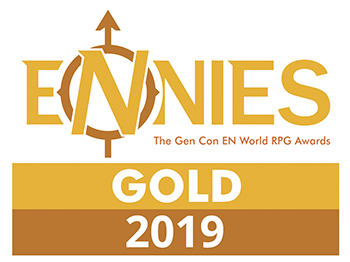Second Sundering
Disaster / Destruction
The Second Sundering started with Ao's decision to recreate the Tablets of Fate, and to separate the worlds of Abeir and Toril once more. The deities were unsure of what this would do to them and their power, and made efforts using their most powerful servants to prepare for that event.
When Ao the Overgod destroyed the Tablets of Fate at the conclusion of the Time of Troubles, he instigated the Era of Upheaval. The Tablets defined the laws of Realmspace and kept it relatively stable. Without them, chaos ensued and the worlds of Abeir and Toril, separated many thousands of years ago, slowly started to overlap. The Spellplague drastically sped up this process.
The Second Sundering started with Ao's decision to recreate the Tablets of Fate, and to separate the worlds of Abeir and Toril once more. The deities were unsure of what this would do to them and their power, and made efforts using their most powerful servants to prepare for that event.
1484
Most of the gods created many Chosen among mortals, trying to gather as much power as possible to be as high in divine ranking as they could before Ao completed the new Tablets of Fate, sealing their status and portfolio. People started to claim they had been "chosen" by the gods and granted special powers, some apparently for "divine purposes" while others had no idea why. Meanwhile, both Telamont Tanthul of Thultanthar and Szass Tam of Thay ordered their forces to capture all the newly anointed Chosen so that they could harvest their power.
Meanwhile, the drow began to cloud the skies over the Silver Marches through a ritual known as the Darkening, preparing the battlefield for their sunlight-hating warriors. A large army of orcs and drow, supported by frost giants and white dragons, then assaulted the Silver Marches in the War of the Silver Marches. Nesmé was destroyed by an orc horde guided by Tiago Baenre riding the white dragon Arauthator. Sundabar was conquered by an orc army commanded by the warlord Hartusk and renamed Hartusk Keep.
1485
The Chosen of Auril started a war with Ten-Towns in Icewind Dale, and was defeated. A rebellion of the subjugated Bedine people in Anauroch against their Netherese masters began when they saw that Netherese forces were spread thin due to shades' conflict with Cormyr.
Towards the end of 1485 DR, the "Great Rain" began to fall continuously around the Sea of Fallen Stars.
1486
The "Great Rain" caused the waters to rise around the Sea of Fallen Stars, consuming much land, but it stopped by the end of the year. Earthmotes, once common across Toril after the Spellplague, began to drop from the sky, although not all of them fell. The earthmotes in the city of Airspur strangely resisted this effect, as well as some earthmotes in other areas, such as the Heart of Ubtao, in Chult.
1487
Stars reportedly fell from the sky, gods long thought dead walked the land and armies led by Chosen clashed everywhere. Major geological instability resulted in numerous earthquakes and volcanoes, as the worlds of Abeir and Toril were separated once again, and areas once consumed by large chasms were restored to their pre-Spellplague status. Ships arrived on the mainland continent from Evermeet, Halruaa, Lantan, and Nimbral—all realms previously thought lost to Toril.
Meanwhile, in an attempt to fully restore the goddess Mystra and the Weave, Elminster Aumar began his search for Khelben Arunsun's writings on the Weave, heading towards Candlekeep. Laeral and Alustriel Silverhand had also been hiding within the library: the two sisters' duty was to prepare their own destruction, so that no one could use their power to gain control over the Weave.
The power of the Wards had also attracted other factions to Candlekeep, and many—namely, the Red Wizards, the Netherese, and the Moonstars—had sent their agents, masquerading as monks, to keep an eye on them. When Elminster reached Candlekeep, the Netherese sleeper-agents attacked the other monks to gain control of the library, but a large number of them had already been replaced by agents of the other factions, leading to a battle for the Wards. Elminster managed to trick the Netherese by masquerading as High Prince Tanthul, but he, Laeral, and Alustriel were in turn tricked by Larloch, who pretended to wish to use the energies of the Wards to strengthen the Weave. Instead, the energies of the destroyed Wards were absorbed by the Shadow King, who then left for Myth Drannor, followed by the three Chosen of Mystra.
Meanwhile in Myth Drannor, Larloch, the Netherese, and the Chosen of Mystra (allied with the elves) clashed in a catastrophic battle. As Tanthul began the draining ritual, his Netherese forces launched an attack on Myth Drannor, and Larloch attacked the baelnorns to drain the ancient magic in their possession. During the battle, Prince Vattick Tanthul was slain by Dove Falconhand, who would then succumb to her own wounds, but not before having awakened the baelnorns of the tombs of Myth Drannor to defend their city and people. The Srinshee herself appeared to fight for Myth Drannor, ordering the baelnorns to protect the Tree of Souls, and sacrificed herself to wrest magical power from both Tanthul and Larloch, then used the Wards of Candlekeep and the mythal to strengthen the Weave.
As Elminster defeated Tanthul in a mage duel, the Netherese enclave crashed atop Myth Drannor. Elminster himself was saved by Mystra, who gained full control over the Weave once more, stopping Shar from turning it into a new Shadow Weave. The survivors of Myth Drannor, among them Coronal Ilsevele Miritar and her consort Fflar Starbrow, were rescued by the Srinshee (before she disappeared) and transported to Semberholme.[29] While Thultanthar was destroyed, the barrier erected by the baelnorns around the Tree of Souls managed to save it and small parts of the city from destruction when the Netherese enclave crashed down atop it. Only the baelnorns remained in the ruins of Myth Drannor afterwards.
As 1487 DR came to a close, the Second Sundering ended with the full return of Mystra and the Weave, the separation of the worlds Abeir and Toril.
Aftermath
After the Sundering, all the wars that started in its wake came to an end. In 1488 DR, the few remaining Netherese forces fought the Bedine over the Memory Spire, causing an emergence of the phaerimm. The League of Silver Marches disbanded in the aftermath of the war with the orcs, and Sembia dissolved into city-states.[28] By the end of the Sundering, the world began to look very much alike to how it was during the 14th century DR, although preserving a few of the changes from the tumultuous Era of Upheaval.[5]
Geographic changes
At the end of the Second Sundering, most of the consequences that the Spellplague had wrought upon Toril were nowhere to be seen. The majority of the earthmotes had fallen, the Sea of the Fallen Stars had returned to its pre-Spellplague volume, the Underchasm had been filled in, and nations and most of the lands that were sent to Abeir during the Spellplague had returned to Toril.
Halruaa, Lantan and Nimbral had returned to the Realms, and while Unther also returned, it did so in a more diminished form than before. However, some Abeiran lands and the new civilizations that arose in the century that followed the Spellplague still remained after the Sundering came to an end. Nations such as Tymanther and Akanûl remained in the Realms more or less in the way they were before the Sundering.
With the fall of Shade and the absence of the Netherese's sustaining magic, Anauroch's climate rapidly became arid once more, and the lands at the heart of Faerûn rapidly deteriorated and became a desert once more. The waters receded from Luiren, making the halfling homeland accessible again, although much of their territory was still under water. Evermeet was restored to Toril, and by the end of the Second Sundering it touched Toril, the Feywild and Arvandor all at the same time.
Changes to the Pantheon
Many deities previously presumed dead or missing managed to return to life (or to re-emerge) during the Second Sundering, and then to quickly amass new followers (or to win back their old faithful),[32] and to reclaim at least some of their former portfolios (resulting in a new distribution of spheres of influence among the Faerûnian deities).[33] Known examples were: Mystra,
Helm ,
Mask ,
Lathander , Bhaal, all the previously lost Drow gods, Leira, Myrkul, Gilgeam, Enlil, and Nanna-Sin, all the Mulhorandi gods, Azuth, and Tyr, among others.
For others deities (like
Shar ) the Second Sundering resulted in a loss of power and influence. The Lady of Loss suffered greatly in the wake of the defeat of the Shadovar and the destruction of the city of Shade in the battle with the forces of Myth Drannor. Telamont Tanthul and most of the Princes of Shade were also killed, further weakening the goddess of darkness.
In 1488 DR, prayers to deities went unanswered, but their "Chosen" were still present. In 1489 DR, prayers to the gods began to be answered again, but the various deities withdrew their power and divine gifts from most of their "Chosen"; their purpose fulfilled.
In Flamerule of the same year, Eilistraee and Vhaeraun fully reacquired the power that they had possessed before 1375 DR. They held their own old portfolios, and were separate entities. Eilistraee was still a drow goddess, as were most of their followers—not dark elves, despite a spell cast by Q'arlynd Melarn in 1379 DR, but they managed to reach a reciprocal understanding, respect, and even a truce (although their followers still skirmished often.)
The Second Sundering brought significant changes to how the deities approached mortals. Many gods became "quieter" than before, causing the emergence of new priesthoods in an attempt to explain the different divine behaviour in the post-Sundering world. That, however, did not mean that deities no longer interacted directly with mortals. Mystra was still able to directly commune with her remaining Chosen, while Eilistraee and Vhaeraun personally announced their return to the Realms, manifesting through their avatars to their followers. Eilistraee, in particular, was seen dancing and speaking to mortals in many places, especially along the Sword Coast (including Waterdeep, where she was witnessed dancing under the walls of the city in 1491 DR). The Mulhorandi gods still ruled among their people, directly interacting with them like the god-kings of old. The Dead Three, greatly reduced in power, decided to remain on Toril, living as quasi-divine mortals, to spread the word of their return, gather more worshipers, and influence events in their favor. Bane led the trio in these efforts.
Cosmology Changes
After the Sundering, sages were unsure if there were changes to the cosmological order of the planes. Scholars came to the conclusion that the different cosmologies were just theoretical constructs created by mortals and not the true shape of the cosmos. By the late years of the 15th century DR, the most popular cosmological models among sages were the Great Wheel, the World Axis, and the World Tree models. The Great Wheel model remained the most commonly used of the three, but modified to include the planes discovered after the Spellplague, such as the Elemental Chaos, the Feywild and the Shadowfell.







